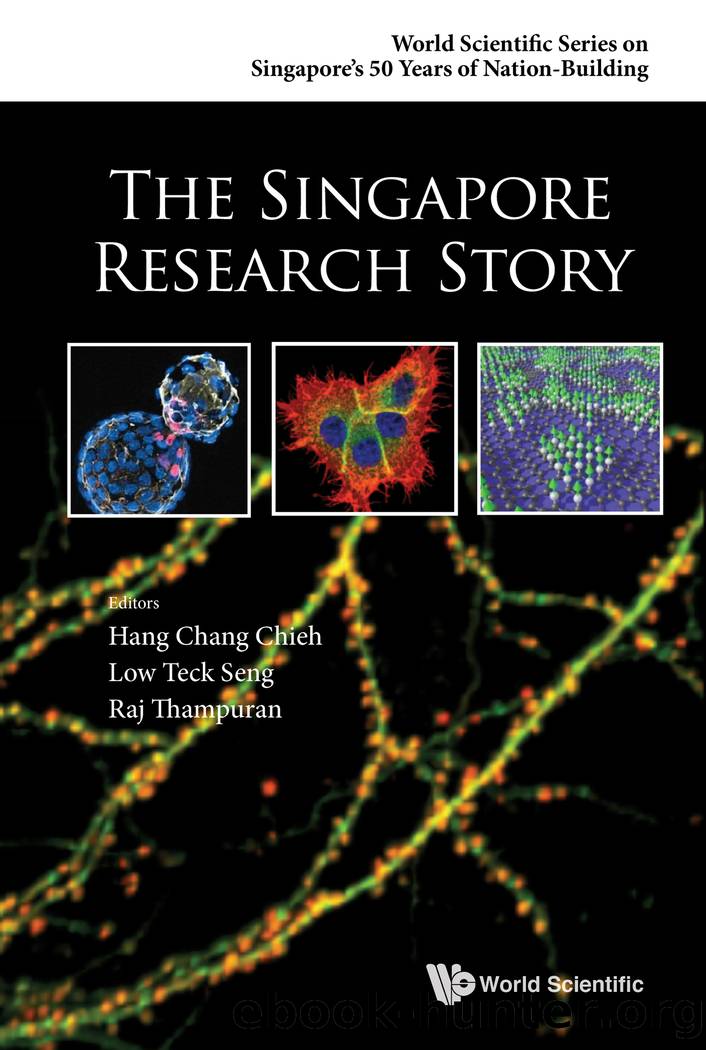The Singapore Research Story by unknow

Author:unknow
Language: eng
Format: epub
ISBN: 9789814641289
Published: 2016-06-15T00:00:00+00:00
Change in Funding Framework
By 2010, the BMS initiative had been progressing for 10 years. Questions were beginning to be asked about the health and economic benefits from the billions of dollars invested. Industry collaboration plays an important role in not only enlarging the research platform but also keeping research grounded and in line with A*STARâs mission. In 2011, there was a tweaking of the funding framework to get more industry collaboration. The tweak involved reducing the core budget of the institutes and increasing the proportion of private sector funding through collaborations. Between 1985 and 2010, NSTB/A*STAR had treated biomedical research as investment into basic and long-term research capability. The 2011 change in funding framework required institutes and researchers to raise the value of industry-backed research in BMS R&D. Industry contributions to BMRC research institutes amounted to a mere $18 million from 2006 to 2010. However, between 2011 and 2015, industry spending with BMRC institutes increased many-fold, to eventually exceed $360 million. Such industry-linked projects were to count as a Key Performance Indicator (KPI) of the institutes. Not only was this target of $360 million a quantum leap, it also required a change of cultural mindset and 2011 put BMRC on a new learning curve.
However, the change was not proposed in a vacuum. In the few years preceding 2011 there had been a noticeable shift in the way the pharmaceutical industry was approaching R&D. With the lack of new drugs coming to market and impending expiry of patents, the big pharma companies were downsizing their R&D teams and moving towards a collaborative R&D approach with academia. There was also a shift to the Asia-Pacific region and the time was ripe for A*STAR research institutes to respond to this shift. During the transition, A*STAR Chairman Lim Chuan Poh and BMRC executive director (ED) Prof Lee Eng Hin met with the EDs of the biomedical research institutes on numerous occasions to clarify the intentions and to allay fears. The departures of a couple of high-profile researchers after the announcement of the tweak had prompted much unnecessary international speculation and discussion on where Singapore biomedical research was headed. Prof Swain who founded SICS pointed out in an oral history interview in 2015 that there were institutes such as SICS, a translational institute, that had no issues with the tweak in the funding framework as such institutes routinely collaborate with industry. The message that was clearly articulated was that A*STAR research institutes require a spectrum of capabilities with good fundamental science that will produce the discoveries that can then be translated and eventually commercialised.
The storm in a teacup has since blown over and BMRC has emerged stronger and more industry-ready than ever. There is strong industry collaboration, there is strong collaborative research with hospitals and universities, and the quality of science has strengthened. Said executive director of BMRC Dr Benjamin Seet who came into A*STAR in 2011: âDealing with the change in mindsets when it comes to working with industry was probably the first challenge, but we realised that at the end of the day, all that really mattered was good science.
Download
This site does not store any files on its server. We only index and link to content provided by other sites. Please contact the content providers to delete copyright contents if any and email us, we'll remove relevant links or contents immediately.
| Africa | Americas |
| Arctic & Antarctica | Asia |
| Australia & Oceania | Europe |
| Middle East | Russia |
| United States | World |
| Ancient Civilizations | Military |
| Historical Study & Educational Resources |
Never by Ken Follett(2925)
Machine Learning at Scale with H2O by Gregory Keys | David Whiting(2337)
The Man Who Died Twice by Richard Osman(2319)
Fairy Tale by Stephen King(2108)
Will by Will Smith(2086)
Rationality by Steven Pinker(1784)
The Dark Hours by Michael Connelly(1591)
The Dawn of Everything: A New History of Humanity by David Graeber & David Wengrow(1585)
Principles for Dealing With the Changing World Order: Why Nations Succeed and Fail by Ray Dalio(1393)
Friends, Lovers, and the Big Terrible Thing by Matthew Perry(1359)
A Short History of War by Jeremy Black(1314)
HBR's 10 Must Reads 2022 by Harvard Business Review(1268)
Go Tell the Bees That I Am Gone by Diana Gabaldon(1255)
Can't Hurt Me: Master Your Mind and Defy the Odds - Clean Edition by David Goggins(1247)
515945210 by Unknown(1221)
Fear No Evil by James Patterson(1124)
443319537 by Unknown(1084)
Works by Richard Wright(1027)
Going There by Katie Couric(1001)
